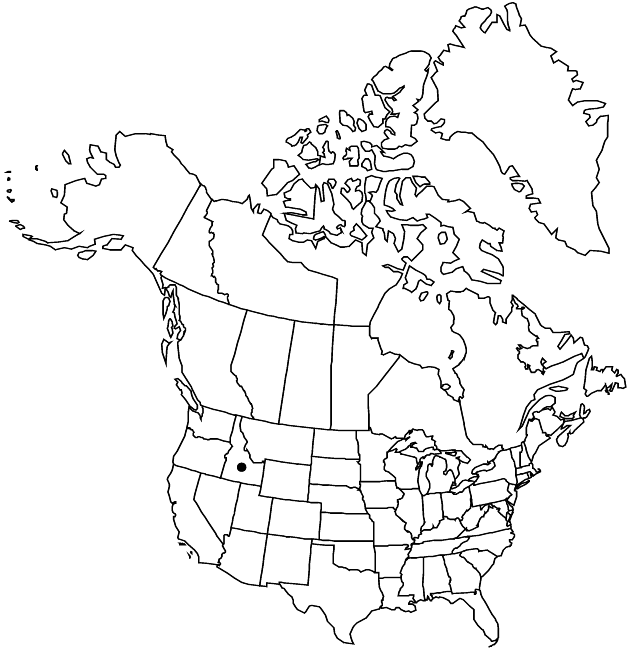Chaenactis evermannii
Leafl. Bot. Observ. Crit. 2: 224. 1912.
Perennials, mostly 6–12 cm (cespitose or ± matted); proximal indument thinning with age, grayish, mostly arachnoid-sericeous to thinly lanuginose. Stems mostly 5–20+, ascending to erect. Leaves basal, 1–5 cm; largest blades broadly ± elliptic, ± plane, 1-pinnately lobed; lobes 2–5 pairs, remote, ± plane. Heads 1 (–3) per stem. Peduncles mostly ascending to erect, 5–10 cm. Involucres ± obconic. Phyllaries: longest 8–12 mm; outer predominantly closely lanuginose, sparsely, if at all, stipitate-glandular, apices erect, ± rigid. Corollas 5–6.5 mm. Cypselae 5–6.5 mm (eglandular); pappi: longest scales 2.5–4.5 mm (lengths 0.4–0.8 times corollas). 2n = 12.
Phenology: Flowering Jun–Aug.
Habitat: Subalpine, usually decomposing granitic sand or gravel slopes, ridges, scree, talus, openings in or above conifer forests
Elevation: 1200–3000 m
Discussion
Chaenactis evermannii is known from mountains of central Idaho. Reports of it from Washington and California/Nevada (P. Stockwell 1940, some as C. nevadensis var. mainsiana) were based on specimens of C. thompsonii and C. alpigena, respectively; all three species are closely related.
Selected References
None.
Lower Taxa
"longest" is not a number.
